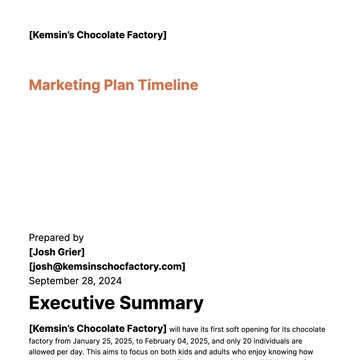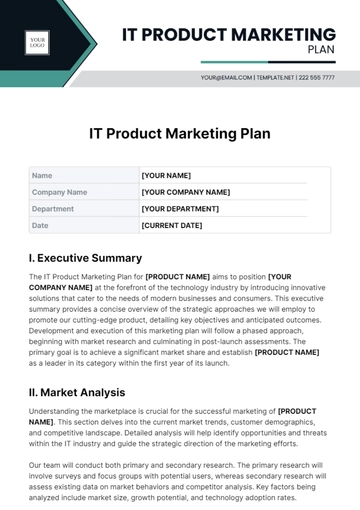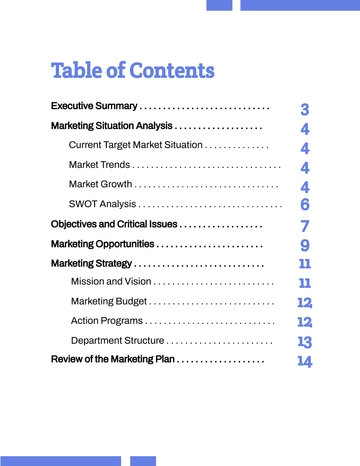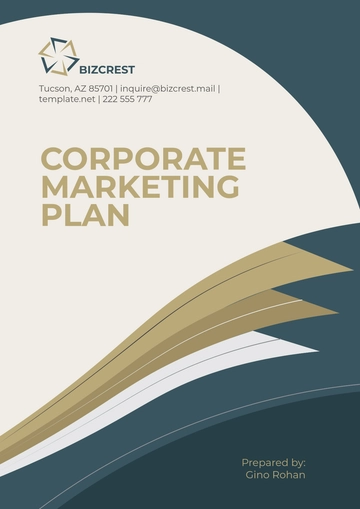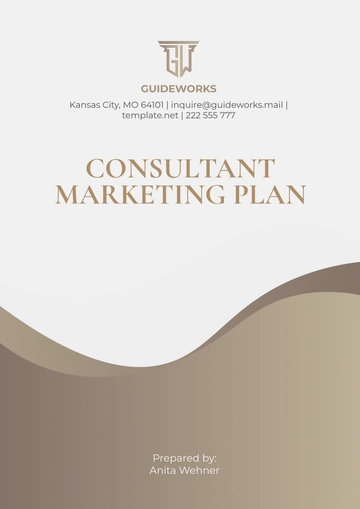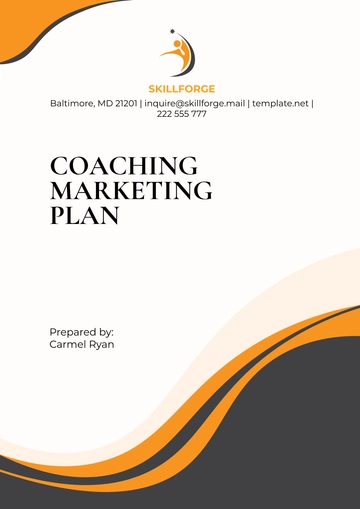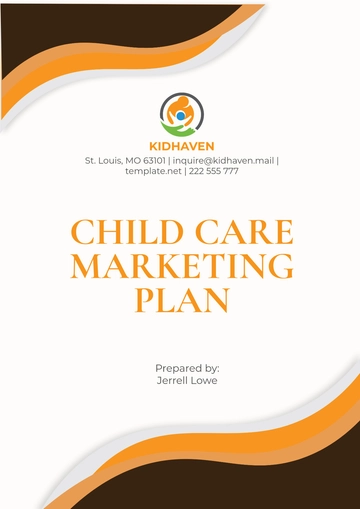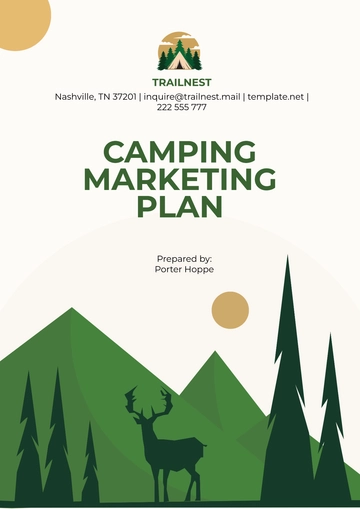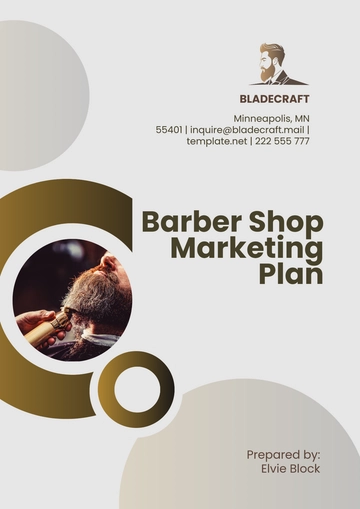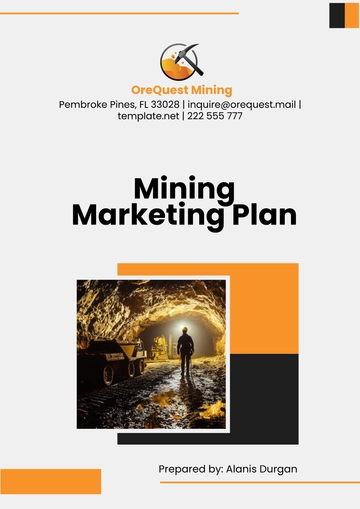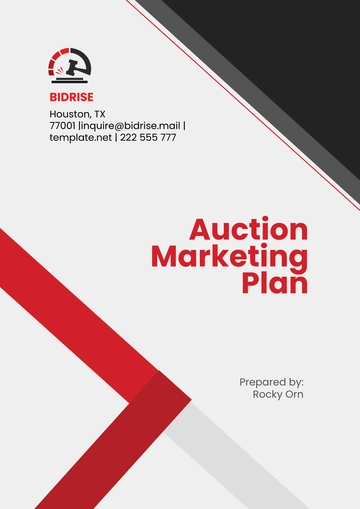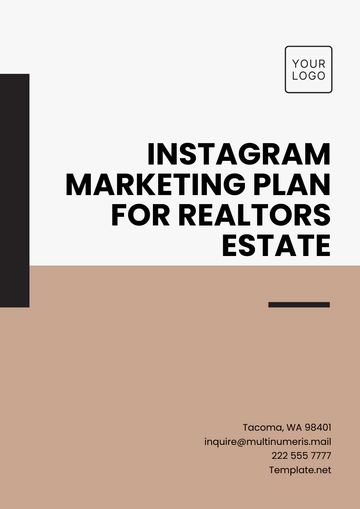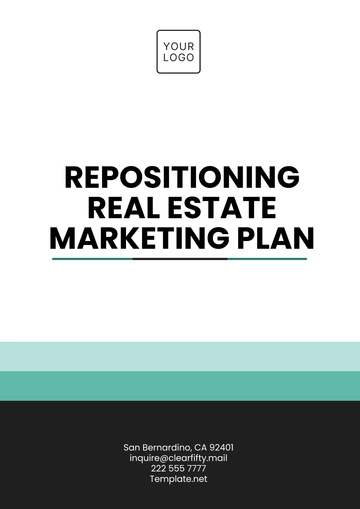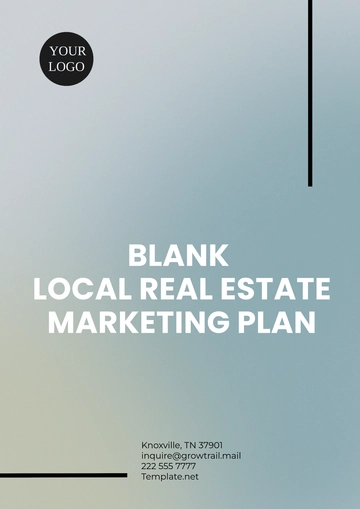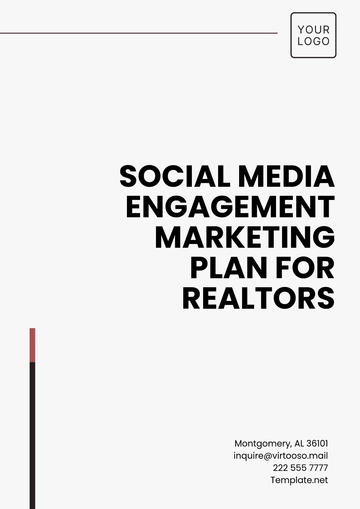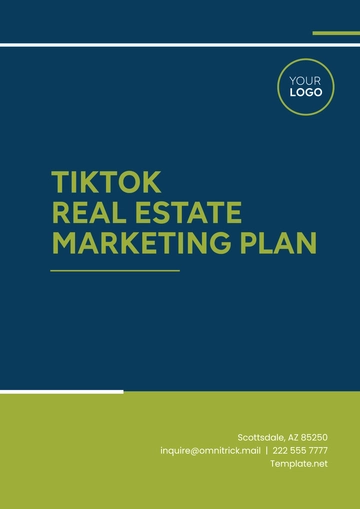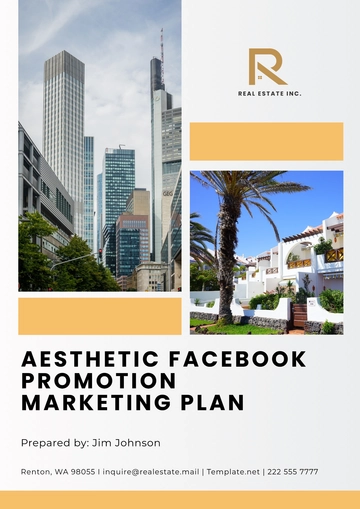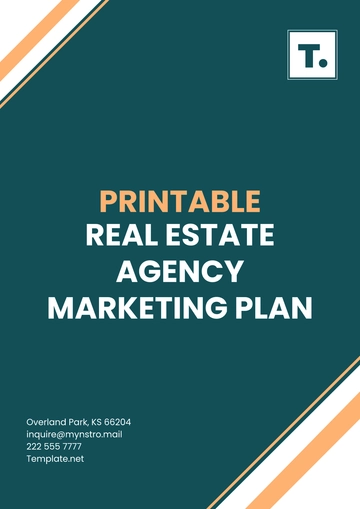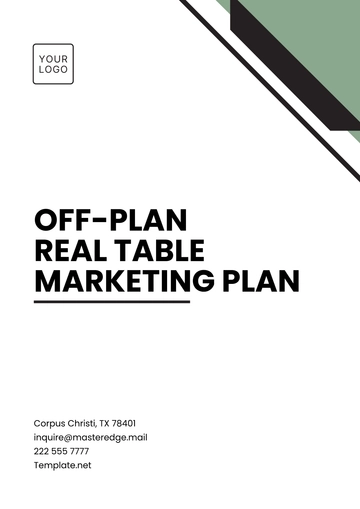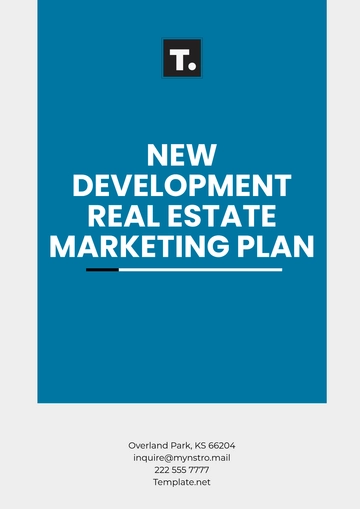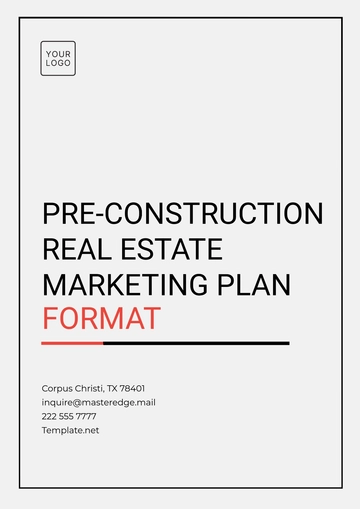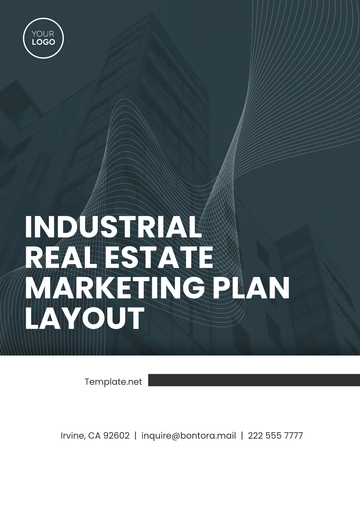Free Spa Digital Marketing Plan
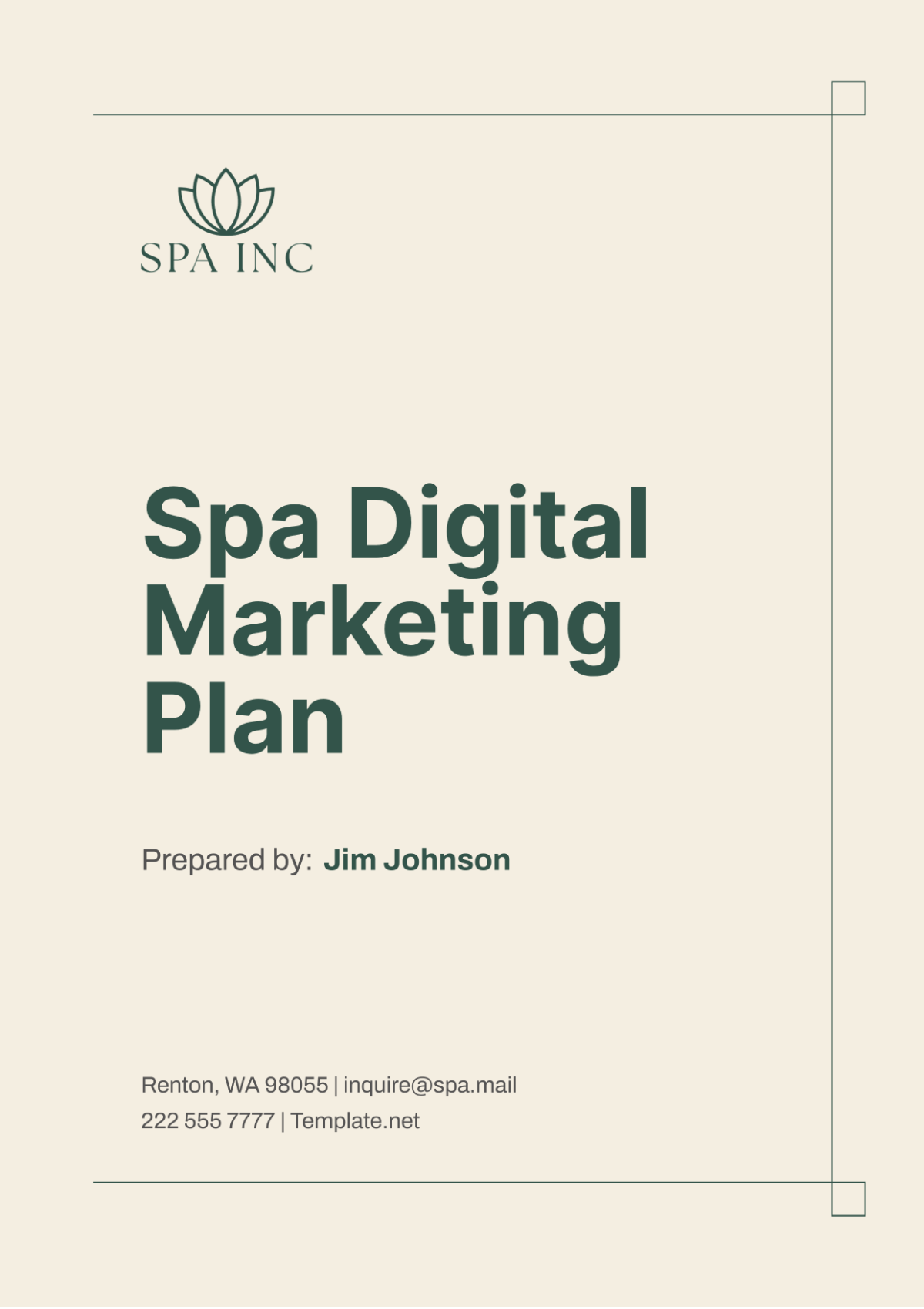
I. Executive Summary
This Spa Digital Marketing Plan outlines the strategies that [Your Company Name] will utilize to elevate its online presence, attract new customers, and retain loyal clients. Our goal is to establish ourselves as the premier spa service provider through targeted digital marketing efforts.
The spa industry is growing, driven by increasing consumer interest in wellness and self-care. [Your Company Name] is well-positioned to capitalize on this trend through strategic digital marketing initiatives that highlight our unique offerings and commitment to excellence. This plan details our market analysis, marketing objectives, digital strategies, budget, metrics, and timeline to ensure that our goals are met effectively and efficiently.
II. Market Analysis
Understanding the market landscape is crucial for developing effective marketing strategies. This section provides a comprehensive analysis of the spa industry, our target audience, and the competitive environment.
Industry Overview
The spa industry is experiencing robust growth, with a projected increase in consumer spending on wellness and self-care services over the next five years. This growth is driven by several factors:
Increased Health Awareness: Consumers are increasingly prioritizing their health and well-being, seeking out services that promote relaxation, stress relief, and overall wellness.
Rising Disposable Incomes: Higher disposable incomes have led to greater spending on luxury and discretionary services, including spa treatments.
Expanding Demographics: The spa industry is attracting a broader demographic, including both younger clients seeking preventive health measures and older clients looking for therapeutic and rehabilitative services.
Target Audience
Identifying and understanding our target audience is key to tailoring our marketing strategies effectively. [Your Company Name] targets three primary segments:
Working Professionals: This group seeks spa services to manage stress and maintain their health amidst busy schedules. They value convenience, quality, and the ability to unwind in a serene environment.
Individuals Seeking Stress Relief: These clients are looking for therapeutic services to alleviate physical and mental stress. They are interested in massages, aromatherapy, and other relaxation techniques.
Beauty Enthusiasts: This segment includes clients who prioritize their appearance and skin health. They are drawn to facial treatments, anti-aging therapies, and other beauty-related spa services.
Understanding the needs and preferences of these groups allows us to create targeted marketing campaigns that resonate with them and drive engagement.
Competitive Analysis
A thorough analysis of our competitors provides insights into their strengths and weaknesses, helping us identify opportunities for differentiation. Major competitors in our area include:
[Competitor 1]: Known for its comprehensive range of services and luxury ambiance, Competitor 1 attracts high-end clients but may have higher price points.
[Competitor 2]: This competitor focuses on holistic wellness and offers a variety of alternative therapies. Their strength lies in a loyal customer base interested in natural and holistic treatments.
[Competitor 3]: Competitor 3 is renowned for its innovative use of technology in treatments and a strong online presence, appealing to tech-savvy clients.
By analyzing these competitors, we can identify gaps in the market and position [Your Company Name] as a distinctive brand offering unparalleled service and a unique client experience.
III. Marketing Objectives
Our digital marketing objectives are designed to enhance brand visibility, drive traffic to our website, and increase client engagement and retention. These objectives are specific, measurable, achievable, relevant, and time-bound (SMART), ensuring a focused approach to our marketing efforts.
Increase Brand Awareness
Objective: Attain a 20% increase in social media followers over the next six months.
Strategy: We will enhance our social media presence through consistent and engaging content, targeted advertising, and collaborations with influencers. This will help us reach a wider audience and establish [Your Company Name] as a leader in the spa industry.
Tactics:
Develop a content calendar to ensure regular posting across all social media platforms.
Create high-quality, engaging content, including behind-the-scenes footage, client testimonials, and wellness tips.
Partner with local influencers to amplify our reach and attract new followers.
Drive Website Traffic
Objective: Achieve a 30% increase in monthly website visitors within this fiscal year.
Strategy: By optimizing our website for search engines (SEO), launching targeted PPC campaigns, and leveraging content marketing, we aim to attract more visitors to our site.
Tactics:
Conduct keyword research and optimize website content to improve search engine rankings.
Launch Google Ads campaigns targeting relevant keywords and demographics.
Publish blog posts and how-to guides that provide value to our audience and encourage sharing.
Enhance Customer Engagement
Objective: Boost online booking rates by 15% over the next quarter.
Strategy: We will improve the user experience on our website, streamline the booking process, and implement personalized email marketing campaigns to encourage repeat bookings.
Tactics:
Redesign the booking interface on our website to make it more user-friendly and intuitive.
Send personalized follow-up emails and reminders to clients, encouraging them to book their next appointment.
Offer exclusive promotions and discounts to newsletter subscribers to incentivize bookings.
Build Customer Loyalty
Objective: Increase customer retention rates by 10% over the next year.
Strategy: We will implement a loyalty program, enhance customer service, and engage clients through personalized communication to foster long-term relationships.
Tactics:
Launch a loyalty program that rewards clients for repeat visits and referrals.
Train staff to provide exceptional customer service and personalize interactions based on client preferences.
Utilize CRM software to track client interactions and send personalized messages, such as birthday greetings and tailored promotions.
Generate Leads and Convert Them into Clients
Objective: Generate a 25% increase in leads and convert 10% of these leads into paying clients within six months.
Strategy: We will use lead generation tactics, such as free trials, webinars, and downloadable content, to attract potential clients and nurture them through the sales funnel.
Tactics:
Offer free trials or introductory discounts to new clients to encourage them to experience our services.
Host webinars on topics related to wellness and self-care to showcase our expertise and engage potential clients.
Create downloadable content, such as e-books and guides, that provide value and capture leads through sign-up forms.
Improve Online Reputation
Objective: Achieve a 4.5-star average rating on review platforms within the next year.
Strategy: By encouraging satisfied clients to leave positive reviews and promptly addressing any negative feedback, we will enhance our online reputation.
Tactics:
Send follow-up emails to clients after their visit, requesting feedback and reviews on platforms like Google and Yelp.
Monitor review sites regularly and respond to all reviews, addressing any concerns and thanking clients for their feedback.
Implement a system to collect and showcase positive testimonials on our website and social media channels.
IV. Digital Marketing Strategies
To achieve our marketing objectives, [Your Company Name] will implement a comprehensive digital marketing strategy that leverages various channels and techniques. This section details our strategies for SEO, social media marketing, content marketing, email marketing, and PPC advertising.
Search Engine Optimization (SEO)
SEO is crucial for improving our online visibility and attracting organic traffic to our website. Our SEO strategy focuses on optimizing both on-page and off-page elements.
On-Page SEO:
Keyword Research: Identify high-traffic keywords related to spa services, such as "spa services," "wellness center," and "massage therapy."
Content Optimization: Ensure that all website content, including blogs, service descriptions, and meta tags, is optimized for targeted keywords.
Technical SEO: Improve site speed, mobile-friendliness, and fix any technical issues that could affect search engine rankings.
Off-Page SEO:
Backlink Building: Acquire high-quality backlinks from reputable websites in the wellness and beauty industry.
Local SEO: Optimize our Google My Business listing and obtain positive reviews to improve local search visibility.
Social Media Marketing
Social media is a powerful tool for engaging with our audience and building brand awareness. Our social media strategy involves creating compelling content and interacting with our followers across various platforms.
Content Creation:
Regular Posts: Share content regularly on platforms like Facebook, Instagram, and Twitter, including updates, promotions, and wellness tips.
Visual Content: Use high-quality images and videos to showcase our spa services and client experiences.
User-Generated Content: Encourage clients to share their experiences on social media and repost their content to build community.
Engagement:
Interactive Posts: Create polls, quizzes, and live sessions to engage with our audience and encourage interaction.
Influencer Partnerships: Collaborate with local influencers to reach a broader audience and gain credibility.
Content Marketing
Content marketing is essential for attracting and retaining clients by providing valuable information and establishing [Your Company Name] as an authority in the spa industry.
Blog Posts:
Educational Content: Publish informative articles on topics such as the benefits of different spa treatments, wellness tips, and skincare routines.
How-To Guides: Create detailed guides on subjects like DIY spa treatments, relaxation techniques, and healthful living.
Customer Testimonials:
Success Stories: Share testimonials from satisfied clients to build trust and credibility.
Case Studies: Highlight specific client experiences and the positive outcomes of our services.
Email Marketing
Email marketing is a cost-effective way to maintain communication with our clients and keep them informed about our services and promotions.
Monthly Newsletter:
Updates and News: Inform subscribers about new services, upcoming events, and spa news.
Exclusive Offers: Provide special promotions and discounts to newsletter subscribers to encourage bookings.
Automated Email Campaigns:
Welcome Series: Send a series of welcome emails to new subscribers introducing them to our services and special offers.
Follow-Up Emails: Send personalized follow-up emails after appointments to request feedback and encourage repeat bookings.
Pay-Per-Click (PPC) Advertising
PPC advertising helps drive targeted traffic to our website through paid search and social media ads.
Google Ads:
Keyword Targeting: Create ads targeting high-intent keywords related to our services.
Ad Extensions: Use ad extensions to provide additional information and increase click-through rates.
Social Media Ads:
Audience Targeting: Use demographic and interest-based targeting to reach potential clients on platforms like Facebook and Instagram.
Retargeting Campaigns: Implement retargeting ads to re-engage visitors who have previously interacted with our website.
V. Budget
Allocating a budget effectively is crucial for the success of our digital marketing efforts. This section provides a detailed budget breakdown to ensure resources are utilized efficiently and strategically.
Cost Breakdown
The following table provides a detailed breakdown of the costs involved in our digital marketing plan:
Category | Amount |
|---|---|
SEO | $5,000 |
Social Media Marketing | $8,000 |
Content Marketing | $3,000 |
Email Marketing | $2,000 |
PPC Advertising | $10,000 |
Supplementary Budget Details
SEO: Costs include keyword research, content optimization, and technical SEO improvements to enhance our online visibility.
Social Media Marketing: Budget covers content creation, social media management, and paid advertising to build brand awareness and engagement.
Content Marketing: Includes expenses for producing high-quality blog posts, guides, and customer testimonials.
Email Marketing: Funds will be used for email platform subscriptions, campaign creation, and subscriber engagement.
PPC Advertising: Covers Google Ads and social media ad spend to drive targeted traffic and increase conversions.
VI. Metrics and KPIs
Tracking and analyzing performance is vital to ensure that our digital marketing strategies are effective and achieve the desired results. This section outlines the key performance indicators (KPIs) we will use to measure success.
Website Traffic
Monthly Visits: Track the number of visits to our website each month to gauge overall traffic growth.
Unique Visitors: Measure the number of unique visitors to understand reach and new client acquisition.
Social Media Metrics
Follower Growth: Monitor the increase in social media followers to assess the effectiveness of our brand awareness efforts.
Engagement Rates: Track likes, comments, shares, and click-through rates to evaluate audience engagement and content relevance.
Conversion Rates
Online Bookings: Measure the percentage of website visitors who convert to clients by making bookings online.
Newsletter Sign-Ups: Track the growth in email subscribers to assess the effectiveness of our lead generation efforts.
ROI
Campaign ROI: Calculate the return on investment for each marketing campaign to determine its profitability.
Overall ROI: Measure the overall return on marketing spend to evaluate the effectiveness of our entire digital marketing strategy.
Supplementary Metrics
Bounce Rate: Monitor the percentage of visitors who leave the website after viewing only one page to identify areas for improvement in user experience.
Average Session Duration: Track the average time visitors spend on the website to assess content engagement and relevance.
VII. Timeline
A well-structured timeline ensures that our marketing strategies are implemented effectively and milestones are achieved on schedule. This section provides a detailed timeline for executing our digital marketing plan over the next year.
Quarterly Timeline
Quarter | Activities |
|---|---|
Q1 | SEO implementations, Social Media Strategy launch, Content Marketing planning |
Q2 | Email Marketing launch, Initial PPC campaigns, Analysis of Q1 efforts |
Q3 | Refinement of strategies, Increased focus on high-performing channels |
Q4 | Comprehensive review, Budget planning for next year, Adjustments based on data analysis |
Supplementary Timeline Details
Q1:
SEO Implementations: Conduct keyword research, optimize website content, and improve technical SEO elements.
Social Media Strategy Launch: Develop a content calendar, create engaging posts, and start interacting with the audience.
Content Marketing Planning: Plan and schedule blog posts, guides, and testimonials to be published throughout the year.
Q2:
Email Marketing Launch: Set up email marketing platform, create and send initial newsletters, and build subscriber lists.
Initial PPC Campaigns: Launch targeted Google Ads and social media ads to drive traffic and conversions.
Analysis of Q1 Efforts: Review performance data from Q1, identify successful strategies, and adjust plans as needed.
Q3:
Refinement of Strategies: Focus on high-performing channels identified in Q2 analysis, optimize campaigns, and reallocate resources if necessary.
Increased Focus on High-Performing Channels: Scale up efforts on channels that show the best ROI and engagement.
Q4:
Comprehensive Review: Conduct a thorough review of all marketing activities and performance metrics.
Budget Planning for Next Year: Develop a budget for the following year based on the insights gained throughout the year.
Adjustments Based on Data Analysis: Make final adjustments to strategies and prepare for the next year’s campaigns.
By following this detailed timeline, [Your Company Name] ensures that all marketing activities are well-coordinated and executed in a timely manner, maximizing the effectiveness of our digital marketing efforts.
VIII. Conclusion
This Spa Digital Marketing Plan lays out the necessary steps [Your Company Name] will take to enhance our online presence and drive business growth. Through strategic planning and focused efforts, we aim to achieve our marketing objectives and establish our brand as the top choice in the spa industry.
By leveraging a combination of SEO, social media marketing, content marketing, email marketing, and PPC advertising, we will create a robust digital marketing ecosystem that attracts, engages, and converts potential clients. Our detailed budget and timeline ensure that resources are allocated efficiently, and our progress is monitored and optimized throughout the year.
For any further inquiries or to discuss this proposal in detail, please contact:
[Your Name]
[Your Email]
[Your Company Number]
Thank you for considering [Your Company Name]. We look forward to a successful collaboration.
- 100% Customizable, free editor
- Access 1 Million+ Templates, photo’s & graphics
- Download or share as a template
- Click and replace photos, graphics, text, backgrounds
- Resize, crop, AI write & more
- Access advanced editor
Elevate your spa's online presence with the Spa Digital Marketing Plan Template from Template.net. Crafted to help you strategize and execute effective digital marketing campaigns, this template offers customizable sections for SEO, social media, email marketing, and more. Take your spa business to new heights with our AI editor tool, making digital marketing a breeze.

